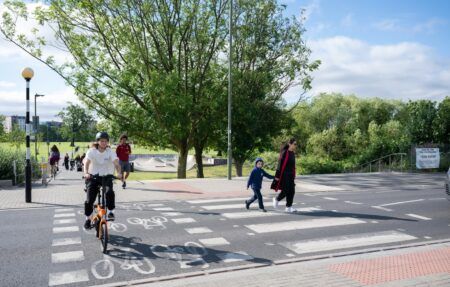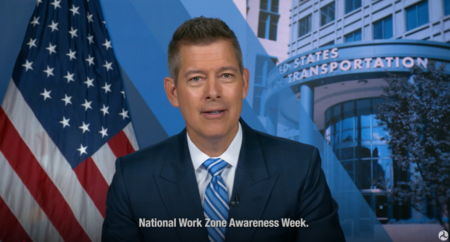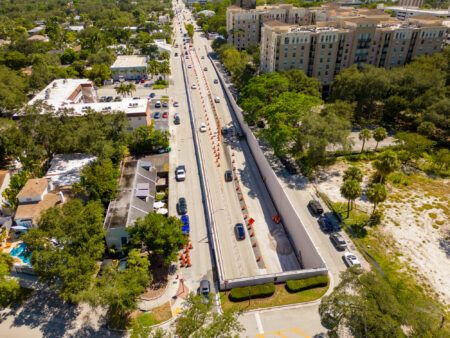The Minnesota Department of Transportation (MnDOT) has started work on two low-cost projects to improve traffic safety at intersections, with a particular emphasis on those on high-risk rural roads.
The reflective red strips will be installed on the stop sign post directly beneath the stop sign. Rural intersection crashes are a serious issue in Minnesota, with 533 serious and fatal injury crashes at rural state highway intersections from 2008 to 2012. MnDOT wants motorists to notice stop signs and stop lights more, to reduce crashes at intersections. The agency will apply reflective red metal strips on nearly 1,000 stop sign posts, and fluorescent yellow tape at 101 traffic signal lights across the state this summer. The stop sign project will be implemented on locally owned roads that intersect with two-lane, two-way state highways. The highways chosen are considered moderate and high-risk crash corridors.
The traffic signal project includes installing florescent yellow tape around the rectangular back plate that contains the green, red and yellow traffic signal bulbs, which is a proven Federal Highway Administration (FHWA) safety counter measure that is already used by other states. The florescent yellow tape will go on signals at intersections that are considered at higher risk for crashes and may have a record of past collisions. The cost of both projects is about US$500,000, and once completed MnDOT will evaluate both schemes for their effectiveness, with a view to rolling out the safety upgrades statewide.
“We think these two low-cost ways to make stop signs and stop lights more visible will help reduce crashes at these higher risk intersections,” said Derek Leuer, traffic safety engineer at MnDOT. “These projects aim to reduce those fatal and serious injury crashes in the state by making the stop signs more visible to motorists. Fatal right-angle crashes are often the result of one or more drivers failing to comply with a stop sign. The reflective tape will make traffic signals look bigger and help motorists be more aware of them. This will be especially helpful at night and in low-visibility conditions. “The installation of red reflective strips to stop sign posts and yellow fluorescent tape around signal lights may become another low-cost tool to help MnDOT improve roadway safety and move Minnesota toward zero deaths.”
MnDOT has also announced three additional Corridors of Commerce projects, valued at over US$400m. Established by the state legislature in 2013, the Corridors of Commerce initiative is intended to improve the state transportation system in ways that specifically support Minnesota’s economy. The projects will be completed over the next four years, and include the expansion of SH 14 and SH 23 from two lanes to four, and converting SH252 into a freeway with MnPASS lanes.
MnDOT commissioner Charlie Zelle said, “The selected projects will enhance the movement of freight and people in the regions where these projects are located, which will aid the economy and reduce congestion.”




